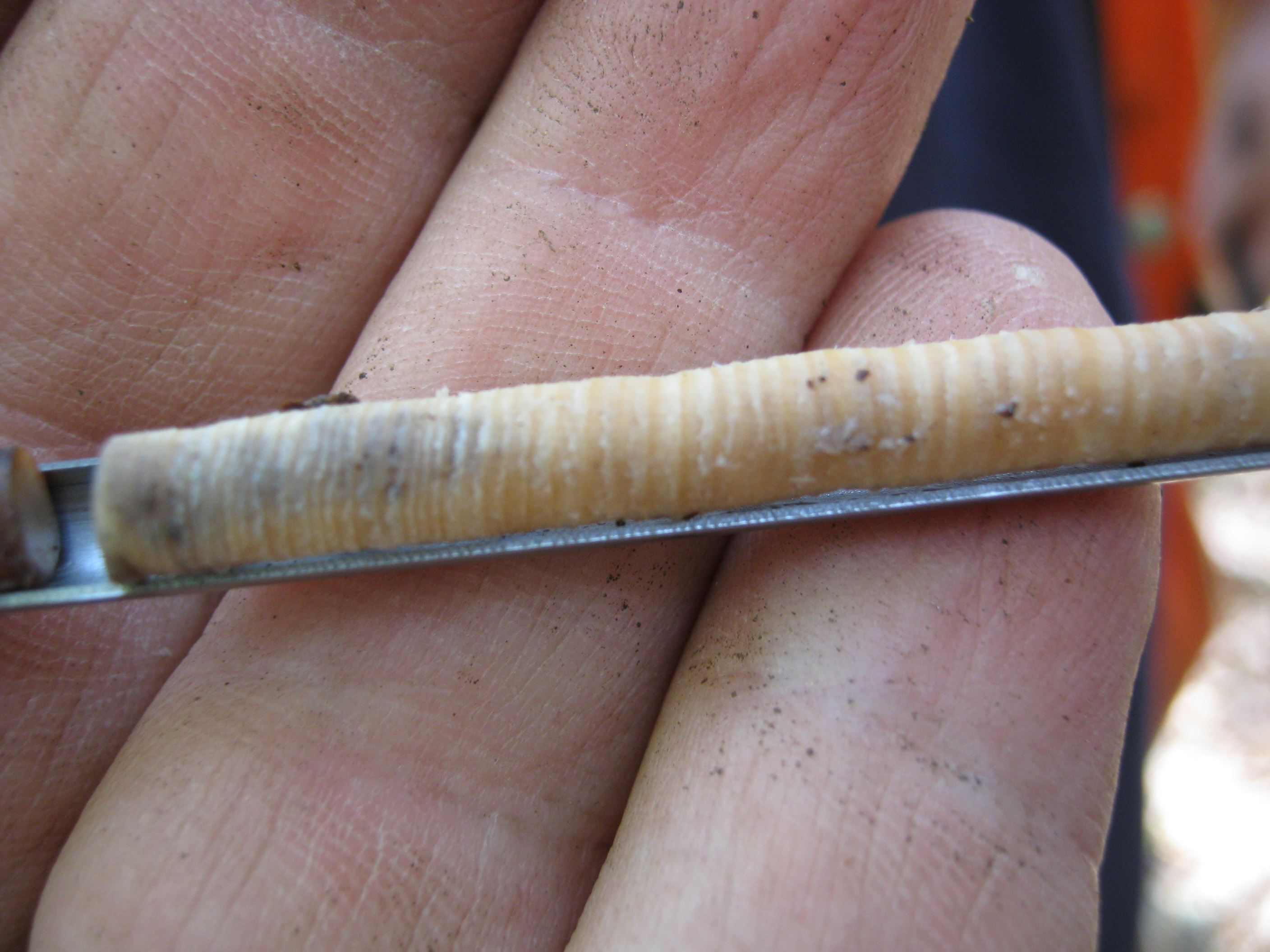Eastern hemlocks that have survived insect infestation have a story to tell

Will the eastern hemlock — a tree that has been around for 10,000 years, often lives 300 years, and can live as long as 800 years — be wiped out by an invasive cousin of the aphid known as the hemlock woolly adelgid?
Maybe not.
When a Virginia Tech faculty member and her graduate student examined eastern hemlocks in six states from Massachusetts to Georgia, they had some unexpected results.
“We wanted to see if there was a silver lining in this otherwise doom-and-gloom story, so we examined the few eastern hemlock trees that have survived the insect infestation,” said Carolyn Copenheaver, associate professor of forest ecology in the College of Natural Resources and Environment. “We found that in some environments, the trees can continue to grow.”
The research by Copenheaver, David Walker of Blacksburg, Virginia, then a forestry master’s student in the college, and Audrey Zink-Sharp, professor of sustainable biomaterials and an expert in wood cell wall architecture, appears in the Annals of Forest Science.
The hemlock woolly adelgid, a native of Asia, was first identified in North America on eastern hemlocks in Richmond, Virginia, in the early 1950s. It now infests hemlocks from the most southern stands in Georgia to near the U.S.-Canadian border and in some areas has killed 95 percent of the trees.
Winter feeding by the insects is the most harmful as they consume the trees’ stored carbohydrates. Death occurs within 15 years and sometimes as soon as four years. In the absence of hemlocks, deciduous trees such as birch, maple, and oak take over, changing the forest ecosystem, the research article explains.
Walker and Copenheaver, however, looked upon the insect attack and tree response as an opportunity. Trees that provide a record of climate and forest ecosystems by virtue of their long lives would now provide a personal report on their response to attack.
The team’s research objective was to use tree-ring records to reconstruct how eastern hemlock growth had been altered by the infestation and examine its influence at the cellular level. They also tested for a relationship between tree-ring growth, loss of needles, and temperature.
Study sites in North Carolina, West Virginia, and Pennsylvania had been used for previous studies so information about the first year of infestation was available; the researchers relied upon local land management records for sites in Georgia, Massachusetts, and Virginia.
At each site, they removed cores from 23 dominant trees that were infested. At the Virginia site, the only place where they could fell trees, two infested trees were cut down and cross-sectioned for the analysis of microscopic changes.
As expected, the researchers reported that the cells of wood produced late in the growing season in the Virginia trees were smaller and the cell walls were thinner.
Unexpected results came from Georgia, West Virginia, and Massachusetts, however, where trees had the lowest rates of needle loss. The Massachusetts trees had wider tree rings after infestation and a significant increase in radial growth, or trunk size, while the Georgia and West Virginia trees had no change in ring width or radial growth rate. Trees in the other states were missing rings or had partial rings, meaning the insects had interfered with tree growth.
“The differences in response are not simply a result of differences in infestation levels,” Copenheaver said. “There may be something unique about the Massachusetts, West Virginia, and Georgia sites that allowed these trees to avoid growth suppression.”
“Because cold winter temperatures are simultaneously harmful to hemlock woolly adelgid and beneficial to eastern hemlock trees, unusually cold winters may be doubly beneficial to hemlock survival,” said Walker, now a research associate in the college.
Copenheaver and Walker also point out that other researchers have noted increased photosynthetic capacity and water use efficiency in infested trees, and that surviving trees benefit from less competition for light, space, and nutrients.
“We anticipate that the results of this study will eventually be used to better predict how eastern hemlock will adapt and change its ecological role in the forest after infestation,” Copenheaver said.
The research, Walker’s master’s thesis work, was supported by a U.S. Department of Agriculture National Institute of Food and Agriculture grant and a Southern Appalachian Botanical Society Earl Core Award.




